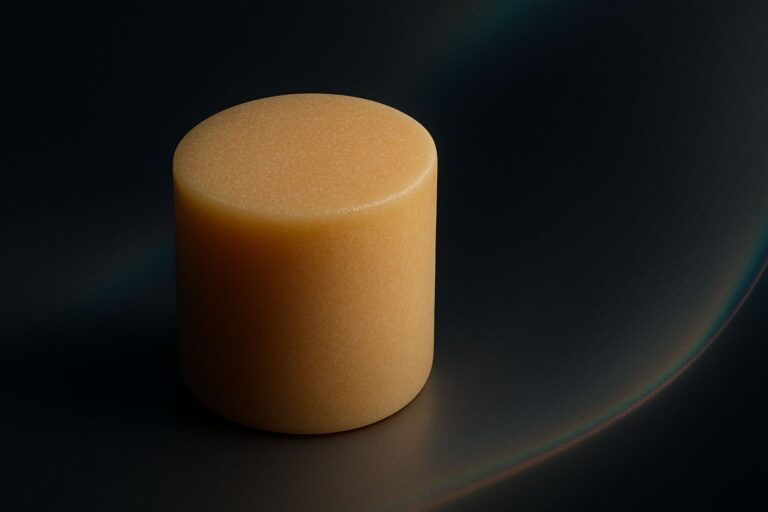
GreenHub
The 2025 Carbon-Negative Material Market: A Guide to Industrial & Compostable Solutions
Part 1: The Biological Cycle (Compostable & Transient Solutions)
Materials in the biological cycle are designed to return safely to the biosphere after use, typically through composting. This category includes advanced compostable materials and natural polymers, making them an ideal alternative to single-use plastics.
This sector is characterized by materials engineered for a short, functional life followed by a clean disappearance. The primary feedstocks are often fast-growing plants like seaweed, algae, or specific plant proteins:
- Key Technologies: Thin-film extrusion and specialized coatings for paperboard.
- Typical Applications: Food sachets, flexible wrappers, takeaway container linings, and produce netting.
- Example Innovators: NotPLA, Xampla / Morro, Plantsea, MarinaTex, Biomera
The Biomera Bridge: High-Performance Compostable Solutions
A key innovation in this space is the development of compostable, biomass waste-based biocomposites that are processable via high-pressure injection molding.
This is where Biomera stands apart. While many focus on films, we engineer durable yet fully compostable solutions for injection-molded and extruded products that require structural integrity. Furthermore, our V3 platform is a next-generation natural polymer in development, designed to be 100% plastic-free and home-compostable, while maintaining the technical performance demanded by modern applications.

Part 2: The Technical Cycle (Durable & Long-Life Solutions)
The Architectural Scale: Carbon-Negative Building Materials
This is the most visible part of the market, focusing on displacing carbon-intensive materials like concrete and steel in construction.
- Key Technologies: Mass timber (CLT), hempcrete, and carbon-cured concrete.
- Typical Applications: Structural beams, insulation, and building facades.
- Example Innovators: Companies in this sector, such as Carbon Cure or Partanna, specialize in manufacturing large-scale building components that serve as massive carbon sinks. Their expertise is in construction, not precision product manufacturing.
The Industrial Scale: High-Performance Composites & Polymers
This is the engine of plastic decarbonization for consumer goods, electronics, and automotive parts. The focus is on creating high-performance, precision-molded materials that can be used in existing industrial supply chains.
The two primary technologies for industrial plastic decarbonization are full material replacement with a biocomposite and additive enhancement with a carbon-negative masterbatch.
Materials in the technical cycle are engineered for longevity and durability, designed to lock away, or “sequester,” carbon for many years within long-life products. This sector is dominated by two distinct scales: architectural and industrial.
The Biomera Platform: Leadership in Industrial Decarbonization
As a leader in this space, Biomera operates a unique materials science platform that provides both full replacement and additive enhancement solutions.
- High-Performance Biocomposites: With a library of over 6,500 formulations, Biomera’s biocomposites serve as a high-performance alternative to traditional plastics. They are engineered from biomass waste-based materials for demanding applications in injection molding and extrusion, turning durable products into long-term carbon sinks.
- Carbon-Negative Masterbatches: Biomera also designs and manufactures custom carbon-negative masterbatch polymers. These concentrated additives allow manufacturers to decarbonize their existing polymer supply chains (including recycled and bio-based plastics) with minimal disruption, offering a rapid and cost-effective path to carbon reduction.

The Architectural Scale: Carbon-Negative Building Materials
This is the most visible part of the market, focusing on displacing carbon-intensive materials like concrete and steel in construction.
- Key Technologies: Mass timber (CLT), hempcrete, and carbon-cured concrete.
- Typical Applications: Structural beams, insulation, and building facades.
- Example Innovators: Companies in this sector, such as Carbon Cure or Partanna, specialize in manufacturing large-scale building components that serve as massive carbon sinks. Their expertise is in construction, not precision product manufacturing.
The Industrial Scale: High-Performance Composites & Polymers
This is the engine of plastic decarbonization for consumer goods, electronics, and automotive parts. The focus is on creating high-performance, precision-molded materials that can be used in existing industrial supply chains.
The two primary technologies for industrial plastic decarbonization are full material replacement with a biocomposite and additive enhancement with a carbon-negative masterbatch.
Conclusion: The Future is Formulated
The carbon-negative material market is not a monolith. It is a diverse ecosystem of specialized innovators. Choosing the right partner means understanding these distinctions and finding an expert who not only provides a material but also understands the science of application.
The future of sustainable manufacturing will be won by those who can master the science of formulation to create tailored, high-performance, and verifiably carbon-negative solutions for every possible use case.
Key Questions for Navigating the Market
Why is it important to categorize carbon-negative companies?
Categorization is crucial because the term “carbon-negative material” is not one-size-fits-all. A material designed for a building (Architectural Scale) has vastly different properties from one designed for a coffee pod (Biological Cycle) or a car part (Industrial Scale). Understanding these categories helps manufacturers choose the right expert partner for their specific application.
Can one company operate in both the Biological and Technical cycles?
Yes, but it is rare and requires a highly versatile technology platform. Biomera is an example of a company that bridges both cycles by offering durable, long-life biocomposites for the technical cycle, as well as fully compostable formulations and a next-generation natural polymer (V3) for the biological cycle.
How do I choose between a full biocomposite and a carbon-negative masterbatch??
The choice depends on your project. A full biocomposite is ideal for a new product where you can design for maximum sustainability and unique aesthetics from the ground up. A carbon-negative masterbatch is the perfect solution for rapidly and cost-effectively reducing the carbon footprint of an existing product line with minimal disruption.

